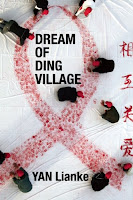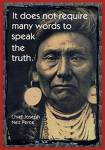Yan Lianke's harrowing, often macabre novel, based on a true incident, is a searing indictment of personal and governmental corruption and materialism. Attempting to alleviate poverty, the villagers of Ding Village, in rural Henan Province, China, begin selling their blood plasma, creating a rampant HIV epidemic. A tragic chain of events ensues, dissolving the bonds of family and community life.
For those interested in finding out more about the events that inspired Dream of Ding Village, Caijing Magazine provides a synopsis of the Chinese plasmapheresis industry.
Wednesday, July 20, 2011
Wednesday, January 5, 2011
Ekphractic Visual Response Poem
My colleague Joe seeded the idea for this ekphractic poem assignment, which I modified for my freshman classes.
Tried out the assignment myself. Here's my experimental poem:
ek·phra·sis
noun \ˈek-frə-səs\
plural ek·phra·ses also ec·phra·ses \-ˌsēz\
Origin of EKPHRASIS
Greek ekphrasis, literally, description, from ekphrazein to recount, describe, from ex- out + phrazein to point out, explain
First Known Use: 1715
Definition of EKPHRASIS
Definition courtesy of http://www.merriam-webster.com/browse/dictionary/ekphrasis
EKPHRACTIC POETRY ASSIGNMENT: Visual Response Poem.
· Include a copy of your image, the title and artist if known, along w/ your poem itself.
- Write about the scene depicted in the artwork (5Ws).
- Relate the artwork to something else it reminds you of (similes, metaphors, memories, history, other works of art).
- Write about the experience of looking at the artwork (physical, emotional, psychological, etc).
- Describe how the things in the artwork are organized or presented: its colors, textures, lines, perspective, angle, dimension, etc.
- Speculate about why the artist created this work (occasion, inspiration).
- Imagine a story behind what you see presented in the work of art.
- What happened just before? What will happen?
- Speak to the artist or the subject(s) of the painting.
- Write in the voice of the artist.
- Write in the voice of a person or object depicted in the artwork.
- What is happening in the wider world beyond the frame?
- What more can you "see"?
- What music can you "hear"?
Friday, September 24, 2010
Benjamin Cayetano: _Ben: A Memoir, from Street Kid to Governor_
Benjamin Cayetano's autobiography provides a surprisingly engaging, personal, and compelling read from an intensely private, seemingly aloof public figure. Born into a broken home in working-class Kalihi, Cayetano documents the evolution of his intellect and social conscience amidst struggle and hardship. While the bittersweet, poignant reflections on childhood and family will speak to a broad audience, political junkies will delight in the latter sections that offer insider perspective on Hawaii politics and the dirty dealings and scandals that're the underbelly of government.
Wednesday, September 22, 2010
M.T. Anderson, _The Feed_
In M.T. Anderson's dystopic young adult novel, everyone has a feed, a digital implant that streams media 24/7 to users, rendering critical thinking and articulateness obsolete. Titus, the novel's protagonist, has spent his entire life dependent on the feed, but when he and his friends take a lunar trip for spring break, he meets a subversive, Violet, who makes him question the status quo for the first time. Wickedly satirical, Anderson extrapolates on current 21st century realities, including environmental degradation, digital dumbing-down, targeted marketing, and materialistic, self-indulgent teen lemmings who mindlessly adopt the latest fashion trends, no matter how fatuous (hey, check out my cool lesions!). He does a particularly masterful job skewering linguistic deterioration: adolescents utilize a superficial, minimalist, neo-California style sociolect, chock full of fillers, profanity, and hedges, and devoid of any lexical richness or edge, e.g. "Unit! She's meg-youch!", while government officials spout political doublespeak to obfuscate cruel truths and conceal lies. Naturally, the novel's lone radical stubbornly resists the societal language trend, protesting the debasing of English by speaking "entirely in weird words and irony, so no one can simplify anything he says" (137). Provocative and relentless.
Bryce Courtenay, _The Power of One_
Buster, one of my freshman English Award winners and an astute, avid reader, gifted me with this novel, his "favorite book", before school let out for summer. Indeed, a terrific, affirming page-turner on every account. Bryce Courtenay's The Power of One is a classic bildungsroman, chronicling the life of Peekay (short for "Pisskopf", the derogatory moniker conferred by school bullies), a precocious white English intellectual growing up in Boer-dominated, apartheid South Africa. A classic "underdog defies odds" novel, the story celebrates Peekay's resistance against the forces that break the human spirit and his efforts to forge his identity as a pugilist, free-thinking intellectual, and activist for social justice.
Monday, May 17, 2010
Greg Mortensen, _Three Cups of Tea_ and _Stones Into Schools_
In these two non-fiction accounts, Greg Mortensen, head of the Central Asia Institute, documents how a failed mountaineering expedition serendipitously led to his life-changing grassroots mission to educate the impoverished girls of Pakistan and Afghanistan, and in doing so, promoting peace and stability in the region. Although the pace of both books occasionally bogs down in blow-by-blow details and you'll undoubtedly find yourself reaching for a map to track the peripatetic wanderings of Mortensen and his energetic staff, the narratives are full of wonderful cross-cultural moments, at turns poignant, dramatic, and humorous. Most importantly, Mortensen's work kindles the hope that idealistic individuals can indeed change the world for the better and go where governments and armies fail to tread, one relationship at a time.
Neal Shusterman, _Unwind_
The setting: the United States, in a future not so distant from now. After the violent Second Civil War, pro-life and pro-choice sides have reached a compromise. From 0-13, life is sacred. From 13-18, however, parents may retroactively abort or "unwind" undesirable minors. And why not transform societal dross into the good and useful, especially because medical science can use 100% of their bodies for organ transplants? Connor is a rebellious teen whose parents have decided, once and for all, to erase his existence. Risa, a ward of the state and once promising piano prodigy, has fallen short in her musical studies, and due to budget cuts, has been slated for termination. And Lev's devoutly religious family has groomed their youngest son his entire life as a human sacrifice for God and the greater good. Together, the three fight for survival in Neal Shusterman's dark, Swiftian dystopia. A fast-paced, discussion-provoking read, sure to engage even reluctant readers.
Subscribe to:
Posts (Atom)









